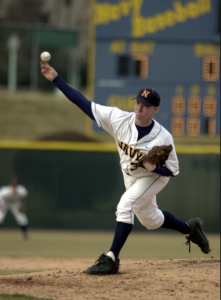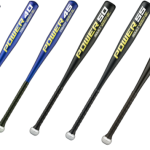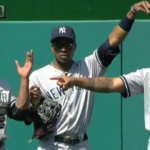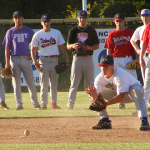5 ways to maximize your bullpens this year
 5 ways to make your bullpen sessions more game-like
5 ways to make your bullpen sessions more game-like
Pitching is different than almost every other skill in baseball in that it’s not a reaction. The pitcher is in total control, they decide when the ball is thrown, they the pitch type, the pitch location, and the pitch velocity.
Everyone else reacts to them.
Because of this, we often forget that pitcher practice needs to simulate the game as much as possible. This article will give you 5 ways you can bullpen sessions more game-like:
Check out how we implement competition in our bullpen sessions with S-T-R-I-K-E-S
1.) Mix wind-up and stretch
The most important pitches a pitcher makes each game will come from the stretch. The ones under the most pressure, the ones that matter the most will come out of the stretch.
Yet many pitchers aren’t comfortable throwing form the stretch, partly because they don't practice it during their bullpen. Our goal for each session is that they throw more pitches from the stretch than the wind up.
There are two ways you can accomplish this goal. First, you can create pitch scripts. Our Cornerstone Elite Member’s area has pitch scripts that meet this goal. A second way to meet this goal is to have pitchers throw each “inning” from the wind-up until the 4th ball they throw. After that, the rest of their pitches have to be from the stretch.
2.) Focus on holding runners and varying timing when pitchers are throwing from the stretch.
One of the principals of my coaching is that I cannot expect our players to perform a skill or tactic in a game that we have not practiced. We were blessed to have several catchers who could shut down the running game on their own, but as soon as they graduated, it became very apparent that our pitchers couldn't’ hold up their end of the bargain when we didn’t have an all-state caliber catcher behind the plate.
So we enacted two things in our bullpen sessions to make them more game and help our players be more natural holding runners during games. First, we have them work on varying timing to the plate. By this, I mean not delivering home on the same count after coming set. You can either have a coach counting each time they come set to deliver a pitch, or have another pitcher count to make sure they don’t deliver each pitch on the same count.
The second thing we put into place was to have our pitchers “pick off” during their bullpen sessions. Obviously there won’t always (or ever) be a first basemen there, but we have them work their first base and second base footwork instead of delivering home occasionally. You can give them a set minimum number of times to work their pick footwork during each inning of their bullpen.
Every now and then a coach should yell “step off” simulating an early break or walk-off.
Check out how we implement competition in our bullpen sessions with S-T-R-I-K-E-S
3.) Realistic Innings
Nobody throws 40 or 50 straight pitches without a break. Most of the pitcher’s game pitches are thrown in 10-25 pitch chunks. We throw our bullpens in pairs where one pitcher throws a specified number of pitches, then rests when the other pitcher throws that same number of pitches. This helps simulate the actual work load of a game.
4.) Using extra catchers wisely
Another issue I was having was pitchers not being able to execute pitches with batters in the box. Particularly ones that were thrown inside. The reason for this was simple, they didn’t get the chance to practice throwing inside with a hitter in the box.
If you cannot use other players for stand-ins, use your extra catchers. Have them track pitches giving them the opportunity to see live pitches and give the pitcher the look of a hitter in the box. There is no need for them to take their gear off when they do this.
We also use extra catchers to call balls and strikes. Again, the visual of having a hitter and umpire there can mess with some pitcher’s heads when they get into game action, so it’s best if we can give them that visual during practice.
5.) Incorporate tactical/competitive games for your pitchers
Imagine this scenario, your pitcher throws his last pitch and misses his spot badly. What does he usually say? “One more!”
I challenge you to not give him one more. If he throws that pitch in a full count with the bases loaded, he doesn’t get one more. There is a consequence for throwing a bad pitch, and there should be at times during a bullpen session.
This is not to say that there isn’t a time for skill development that shouldn’t be competitive or pressure filled, but I have greatly ramped up the competitiveness of my pitcher’s bullpen sessions.
One of the ways we do that is with competitive games during bullpens. My pitchers favorite game is called S-T-R-I-K-E-S which is a version of the basketball game P-I-G or H-O-R-S-E (well call it R-O-C-K-E-T-S for our mascot.
Check out how we implement competition in our bullpen sessions with S-T-R-I-K-E-S
I challenge you going forward to start incorporating these ideas in your pitcher’s bullpen sessions. What you’ll find is that they are able to compete better in games, they will be more comfortable in ALL situations, not just some situations and they will see the skills they develop in practice translate into in game performance.
 Posted by Kyle Nelson
Posted by Kyle Nelson- Posted in Pitching
 Jan, 15, 2018
Jan, 15, 2018 2 Comments.
2 Comments.
Elite members login here
Check out what’s New/Hot!
Recognizing, Diagnosing, and Fixing Common Hitting Flaws eCourse The 3 metrics we tested on Blast motion sensors this year Sneak Peek Inside an Elite Q and A The batting practice continuum Elite Member’s area table of contents 50+ “Chaos” hitting drills
5 sample Chaos hitting drills FREE
Mental Skills and Culture Building The hitting pyramid Welcome Elite Member, Trey! Ideas for a pitcher first practice 12 week bat speed improvement plan Make plans this offseason to have your team playing their best baseball at the end of the year” Top 5 hitting drills to translate practice skill to game performanceHow we used Blast Motion sensors with a team in 2019
What to do if your hitters are overmatched Welcome Elite Member, Tommy! Setting your baserunners up for success Welcome Elite Member, Mike! A consulting call with Elite Member Matt FREE Web Clinic: Developing Athletic, Consistent, Extraordinary Infielders
 Coach Kyle Nelson
Coach Kyle Nelson





[…] 5 ways to maximize your bullpens this year – Are your bullpen sessions lacking? Try these 5 tips! […]
[…] Blog post on 5 ways to maximize your bullpens this season […]